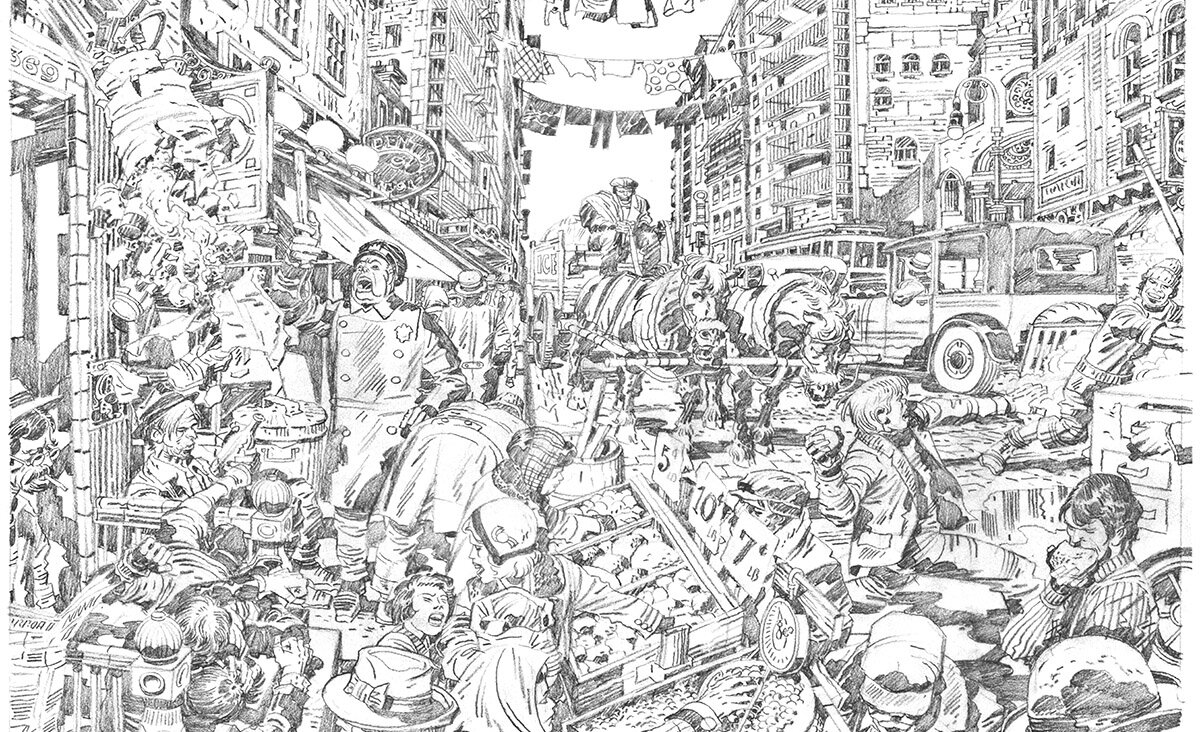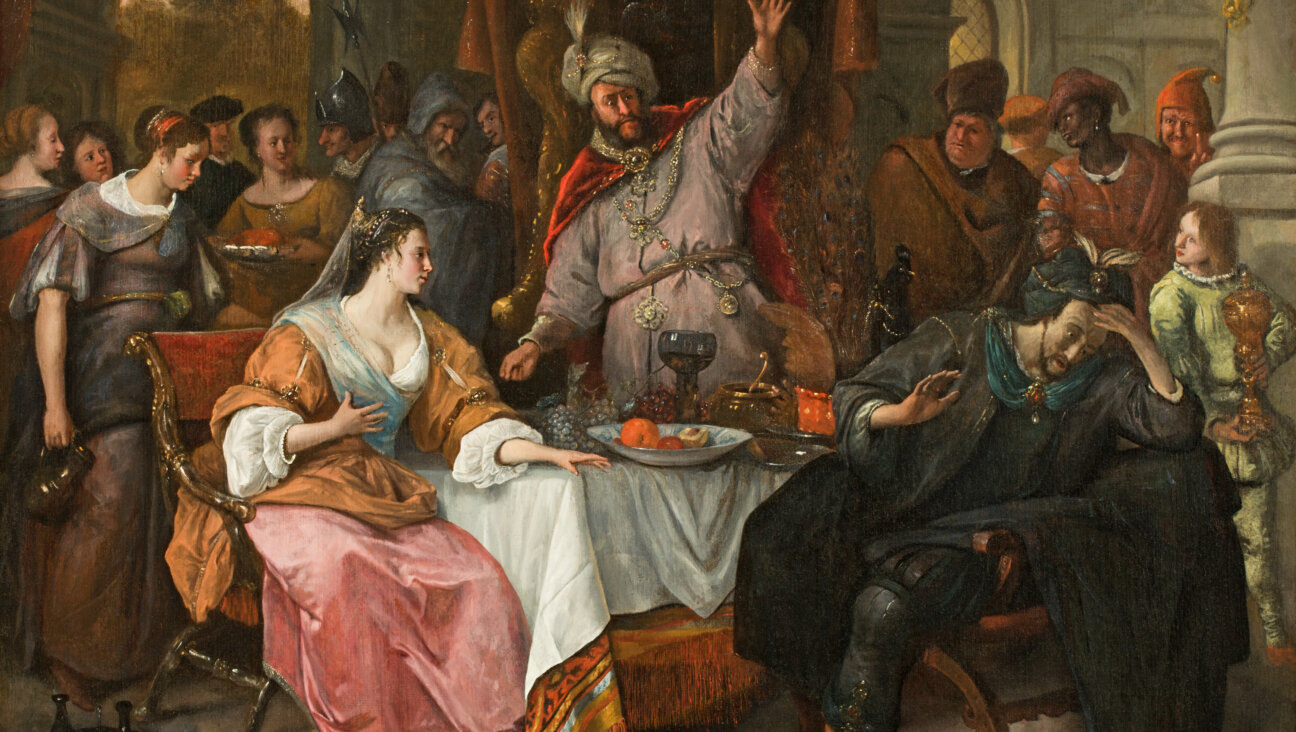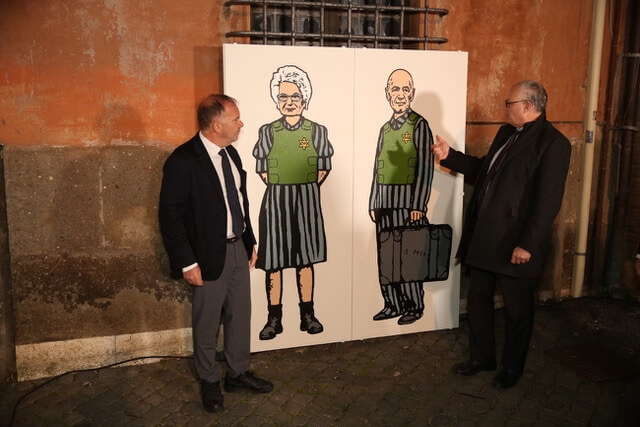How Hard Is It To Trace Nazi-Looted Art? Heirs’ Showdown With German Foundation Gives Insight.

A man photographs one of five drawings by Austrian painter Egon Schiele during an April, 2016 press conference at Vienna’s famous Leopold Museum, which agreed to return two artworks to the heiress of Viennese art collector Karl Maylaender who was deported in 1941. Image by JOE KLAMAR/Getty Images
When the Viennese cabaret artist and art collector Fritz Grünbaum was deported to the Dachau concentration camp in 1938 — he would die there in 1941 — his art collection numbered more than 400 works, many by the Austrian Expressionist Egon Schiele. Much of his collection was confiscated by the Nazis after his deportation, after which its history becomes murky. Grünbaum’s heirs have been trying to recover his lost collection for decades.
In April, Judge Charles Ramos of the New York State Supreme Court ordered that two Schiele drawings in the possession of London-based gallery owner Richard Nagy, “Woman in a Black Pinafore” and “Woman Hiding her Face,” be returned to Grünbaum’s descendants. Nagy is appealing that ruling, and now, as The New York Times reports the two drawings it concerns are among 63 Schieles claimed by the family that have been removed from a database that tracks Nazi-looted art. The two drawings ruled to belong to Grünbaum’s heirs are among those scrubbed from the database, a decision the heirs are challenging.
The database began operations in 2000, after which it was run by a number of organizations; it’s currently under the control of the German Lost Art Foundation, an organization established by the German government in 2015 to research and locate missing artwork. The database is designed to track and flag artwork believed to be stolen by the Nazis that is put on the open market. A listing on the database can affect a work’s value and may pressure sellers to return the work to the original families.
“The Foundation is sometimes asked to take search requests (lost reports) off the database,” Freya Paschen, a spokeswoman for the foundation, wrote in an email to the Forward. “In the case of the collection of Fritz Gruenbaum [sic], this rare case affected 63 works, whereas 163 other objects are still on record. It is important to note, that the fact that Fritz Gruenbaum [sic] was persecuted by the Nazis is not contested. That is why a great number of lost works of his former collection are still published.”
While the foundation assesses the validity of requests to list artwork in the database, it itself does no research into the works’ provenance.
The removal of the 63 Schieles was prompted by a push from art dealers, including Nagy, who maintain that the works in question were never stolen. The Schieles, the dealers contend, were transferred to the ownership of Grünbaum’s sister-in-law, Mathilde Lukacs-Herzl, who sold them to the Swiss art dealer Eberheld Kornfeld in 1956.
In 1998 Dr. Rudolf Leopold, an art collector who purchased two Schieles from the Grünbaum collection claimed that he knew of at least 16 other works from the same collection that had been sold. In reporting this development The Times found that all 16 works were purchased from Kornfeld’s gallery in 1956. When reached for comment in 1998, Kornfeld first claimed he didn’t “remember the details” of the sale, but later named Lukacs-Herzl as the seller of the works, The Times reports.
In challenging the account and the decision to remove the paintings listed, Grünbaum’s heirs cite discrepancies in Kornfeld’s documents, including multiple misspellings of their relative’s name in what were supposed to be her own signatures. The heirs also argue that the fact that Lukacs-Herzl was only identified by Kornfeld over 40 years after the reported initial sale and nearly two decades after her death indicates the dealer’s story was fabricated.
Among the 63 paintings struck from the database is “Dead City III,” a painting that belonged to Leopold that was seized from an exhibition at the MoMA by New York District Attorney Robert Morgenthau in 1998 on behalf of Grünbaum’s heirs. The heirs’ attorney, Raymond Dowd, called the move by Morgenthau “the most important art seizure in history,” and it paved the way for the Washington Principles, guidelines for the restitution of Nazi-confiscated art established at an international conference in December of the same year.
“It’s a disgrace that Germany would erase the work of Robert Morgenthau, which is what led to the Washington Conference in the first place,” Dowd told the Forward.
“The unlisted status of these paintings might change, if new historical information is brought forward that would challenge the current status,” Paschen told the Forward.
PJ Grisar is the Forward’s culture intern. He can be reached at [email protected]
The Forward is free to read, but it isn’t free to produce

I hope you appreciated this article. Before you go, I’d like to ask you to please support the Forward.
Now more than ever, American Jews need independent news they can trust, with reporting driven by truth, not ideology. We serve you, not any ideological agenda.
At a time when other newsrooms are closing or cutting back, the Forward has removed its paywall and invested additional resources to report on the ground from Israel and around the U.S. on the impact of the war, rising antisemitism and polarized discourse.
This is a great time to support independent Jewish journalism you rely on. Make a gift today!
— Rachel Fishman Feddersen, Publisher and CEO
Support our mission to tell the Jewish story fully and fairly.
Most Popular
- 1

Fast Forward Ye debuts ‘Heil Hitler’ music video that includes a sample of a Hitler speech
- 2

Opinion It looks like Israel totally underestimated Trump
- 3

Culture Is Pope Leo Jewish? Ask his distant cousins — like me
- 4

Fast Forward Student suspended for ‘F— the Jews’ video defends himself on antisemitic podcast
In Case You Missed It
-

News In Edan Alexander’s hometown in New Jersey, months of fear and anguish give way to joy and relief
-

Fast Forward What’s next for suspended student who posted ‘F— the Jews’ video? An alt-right media tour
-

Opinion Despite Netanyahu, Edan Alexander is finally free
-

Opinion A judge just released another pro-Palestinian activist. Here’s why that’s good for the Jews
-
Shop the Forward Store
100% of profits support our journalism
Republish This Story
Please read before republishing
We’re happy to make this story available to republish for free, unless it originated with JTA, Haaretz or another publication (as indicated on the article) and as long as you follow our guidelines.
You must comply with the following:
- Credit the Forward
- Retain our pixel
- Preserve our canonical link in Google search
- Add a noindex tag in Google search
See our full guidelines for more information, and this guide for detail about canonical URLs.
To republish, copy the HTML by clicking on the yellow button to the right; it includes our tracking pixel, all paragraph styles and hyperlinks, the author byline and credit to the Forward. It does not include images; to avoid copyright violations, you must add them manually, following our guidelines. Please email us at [email protected], subject line “republish,” with any questions or to let us know what stories you’re picking up.
















